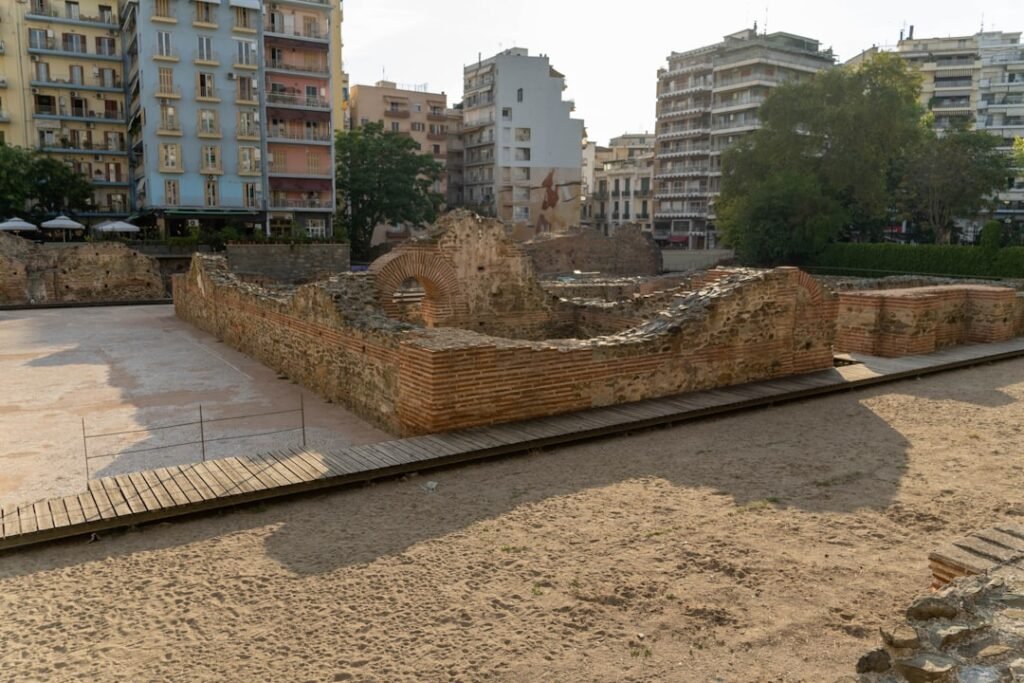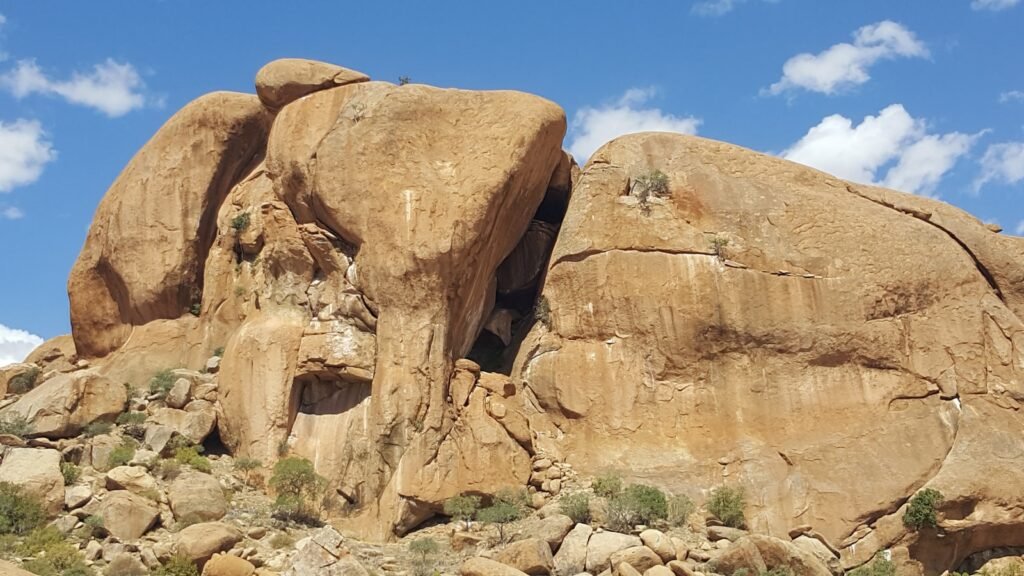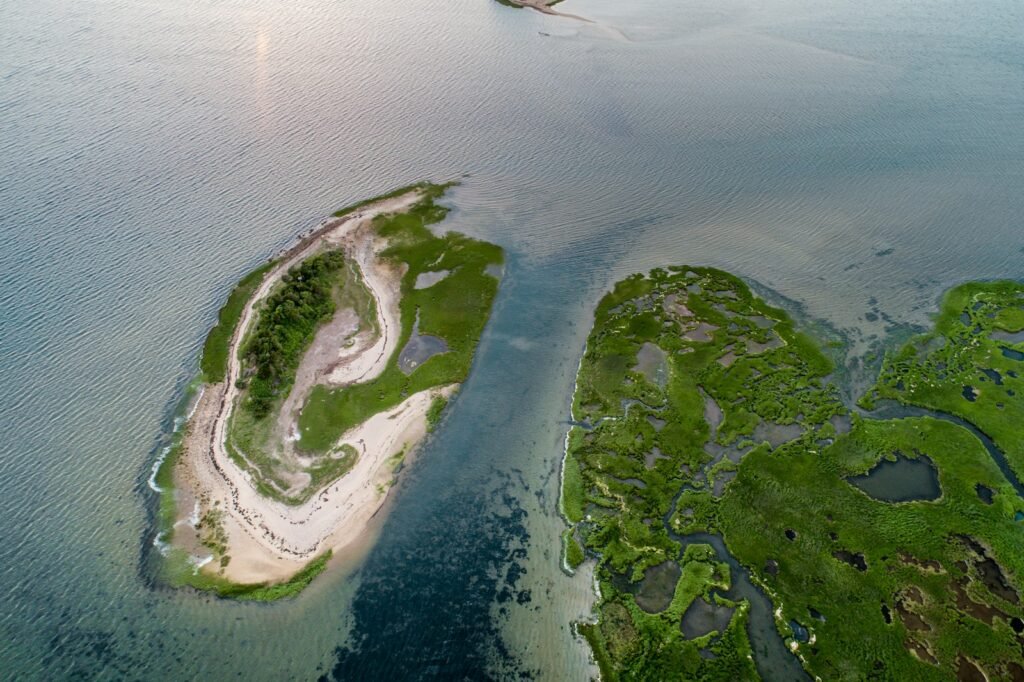Imagine walking down a bustling city street, unaware that beneath the concrete and asphalt lies a hidden world of ancient life. Every step you take could be directly above prehistoric creatures that roamed the Earth millions of years ago, or remnants of civilizations that thrived thousands of years in the past. This invisible layer of history exists in virtually every major urban center around the globe, creating an extraordinary archaeological and paleontological treasure trove that most city dwellers never even realize exists.
Cities are like onions, built in layers of history stacked one atop another, where ancient ruins and prehistoric fossils create an intricate dance between urban development and historical preservation. Modern paleontology and archaeology have revealed that our most vibrant cities are essentially built on top of entire ecosystems and civilizations, each telling its own remarkable story about life on Earth.
How Ancient Life Gets Buried Beneath Cities

The main contributing factor for buried ancient remains is humanity building on top of previous generations, rather than properly discarding the rubble of those who came before them. Settlements constantly imported food and building materials for populations, but getting rid of waste and rubbish was a much lower priority, with new houses built directly on top of ruins because hauling away rubble was labor intensive.
Natural processes also play a crucial role in this burial phenomenon. Rivers periodically flooded and added layers of silt, while in dry regions wind constantly blew in sand and dust. Organic matter like foliage and plant matter decayed, producing soil and slowly raising ground levels, with flooding bringing additional matter into cities.
Towns don’t get built anywhere randomly; they’re usually located near water, transportation routes, and fertile land, with good locations being continuously reoccupied for thousands of years even after being temporarily abandoned due to war or disease. This continuous habitation creates what archaeologists call “tells” in the Middle East, which are essentially large mounds concealing places like Troy, Babylon, and biblical Nineveh.
The Science Behind Urban Archaeological Discoveries

Archaeologists call the process of how archaeological sites form “taphonomy,” which breaks into natural processes like flooding that brings silt and debris, volcanic burial, landslides, or even earthworms slowly burying objects over time. A large chunk of archaeological features uncovered today were always intended to be underground, including graves, foundations, cellars, post holes, waste pits, and buried treasure hoards.
The burial process happens remarkably systematically in urban environments. Much of London was low lying and wet when first urbanized by Romans, with soil and rubbish intentionally dumped and new structures built over old as streams and boggy ground was filled in and raised, because most cities are dynamic places continually being rebuilt.
Sometimes dramatic events accelerate this process. After destructive events like the Iceni tribe’s razing of Londinium in AD61 or the Great Fire of 1666, it was often easier to flatten remains and build directly on top, preserving charred snapshots of cities for future archaeologists.
Revolutionary Technology Unveiling Hidden Worlds

LiDAR (Light Detection and Ranging) has become a revolutionary remote sensing tool indispensable to modern archaeology, emitting laser pulses to create precise 3D maps that reveal hidden archaeological features invisible to the naked eye, penetrating dense forests, arid plains, and even urban sprawl. Some of the most dramatic recent discoveries have come via LiDAR, which aims rapid laser pulses at surfaces to create three-dimensional maps, with advances improving its ability to penetrate tree canopies and reveal features suggesting past human activity.
Ground-based geophysical methods like Ground Penetrating Radar and Magnetometry are used for archaeological imaging, though they’re usually considered a separate discipline from remote sensing. Ground penetrating radar uses low-power electromagnetic waves to produce high-resolution subsurface images, transmitting short electromagnetic pulses that reflect off buried objects to create useful two-dimensional or three-dimensional images.
Modern archaeologists employ an astonishing suite of 21st century technologies including artificial intelligence, DNA sequencing, satellite imagery, airborne LiDAR, drones carrying thermal infrared cameras, and tiny robots that can crawl down tomb shafts. These tools have revolutionized how quickly and accurately researchers can identify potential archaeological sites without destructive excavation.
Paleontological Treasures Beneath City Streets

It’s not only human history buried beneath cities; fossils also lie hidden beneath urban landscapes, providing remnants of prehistoric life that offer windows into Earth’s distant past. The Philadelphia area has played a major part in paleontology, with the city becoming the birthplace of vertebrate paleontology in the early 1800s, when the Academy of Natural Sciences became a hub for paleontological work.
The unearthing of the first nearly complete dinosaur skeleton in Haddonfield, New Jersey, in 1858 sparked interest in dinosaurs across North America, with subsequent research and excavations in New Jersey, Pennsylvania and Delaware continuing to yield fossils and knowledge about ancient life.
Occasionally archaeologists find paleontological resources in archaeological contexts, because people in the past were collectors too, with fossils found at pre-contact Native American sites where people collected objects and modified them for cultural purposes, including a mastodon tooth discovered in Benjamin Franklin’s basement as part of his natural history collection. This intersection shows how ancient peoples valued and incorporated prehistoric remains into their daily lives.
Case Studies: Ancient Ecosystems in Major Cities

In Rome, modern buildings sit above ruins of the ancient Roman Empire, with archaeologists often finding fragments of pottery, coins, and entire streets frozen in time, where each layer represents a different era offering glimpses into lives of those who came before. Rome has been continuously occupied since 753 BCE, yet ancient Roman remains are often buried deep down due to organic matter decay producing soil, flooding bringing additional matter, and humanity building on top of previous generations.
We can see this layering especially well in London where Roman streets and buildings have been buried under meters of made ground, and in York where Viking buildings and streets have been found. In London, excavation of a new railway line led to discovery of a Roman temple and countless artifacts, providing new insights into the city’s ancient past.
In Mexico’s Yucatán Peninsula, lasers exposed a vast Maya ceremonial complex beneath a 30-foot-tall jungle canopy complete with pyramids and ball courts, while airborne LiDAR in the Amazon Basin revealed sprawling pre-Columbian settlements with geometric earthworks. These discoveries challenge previous assumptions about supposedly untouched wilderness areas.
The Role of Natural Disasters in Preservation

In AD 79, the cities of Pompeii and Herculaneum were buried under meters of ash and pumice following Mount Vesuvius’s catastrophic eruption, being lost to the world and preserved under volcanic debris until accidental rediscovery in the 16th century, with the ash that smothered life also preserving it as a snapshot of Roman life frozen in time.
Probably the most striking example of nature’s destructive yet preservative power in archaeology is Pompeii, where two days of hot pumice and ash from Vesuvius buried the Roman city and those unable to escape under 5 meters of debris. The Sphinx was buried up to its head in sand for most of its history, with partial excavation beginning in 1816-1817 and full excavation completed between 1925-1936.
Volcanic eruptions, forest fires, and dust storms cause particles to fall from the sky that must accumulate somewhere, creating natural burial processes. These catastrophic events, while devastating to ancient populations, create some of the best preserved archaeological sites for modern researchers to study.
Modern Urban Planning and Archaeological Integration

Constructing modern infrastructure over ancient ruins and fossils presents unique challenges, requiring engineers and city planners to balance development needs with preservation of historical sites, sometimes halting or rerouting construction projects to protect significant finds, as happened in Athens where metro construction uncovered vast archaeological sites.
Balancing progress with preservation requires careful planning and collaboration between archaeologists, engineers, and city officials. In Belgrade’s Square of the Republic, major construction works in 2019 incorporated GPR surveys to preliminarily check and accurately identify the position and size of buried foundation remains from the historic Württemberg-Stambol Gate.
The ethical implications of urban archaeology are complex. The use of LiDAR in archaeology raises ethical concerns about revealing sensitive or culturally significant sites, as widespread availability of LiDAR data can lead to unauthorized excavations, looting, or damage, requiring researchers to carefully consider ethical implications and collaborate with local communities for responsible data use.
Economic and Cultural Impact of Urban Archaeological Discoveries

While preserving history is vital, it also brings economic benefits as archaeological sites attract tourists, boost local economies, and create jobs, with Egypt’s discovery of ancient tombs turning regions into major tourist destinations drawing visitors worldwide, while historical sites in urban areas become cultural landmarks enriching community identity and fostering pride.
Though the famous paleontologists Cope and Marsh were financially and socially ruined by their competitive attempts to outcompete each other, they made important contributions to science and paleontology, providing substantial material for further work with their efforts leading to 142 new species of dinosaurs being discovered, resulting in increased knowledge of prehistoric life and sparking public interest in dinosaurs.
The discovery process itself creates lasting value beyond tourism. Because lidar data can live forever on hard drives, it’s not only a window to the past but a preservation tool, as climate change and urban sprawl continue but information gathered represents a permanent digital record, meaning if disasters destroy sites, archaeologists still have data to analyze ancient settlements exactly as they were when first mapped.
Conclusion

The ancient ecosystems buried beneath represent one of humanity’s most remarkable hidden treasures. These discoveries remind us of our shared heritage, serving as bridges connecting us to people who shaped the foundations of our world, and as we uncover layers of history, we’re not merely excavating stones and artifacts but resurrecting stories, dreams, and lives of those who came before us.
The stories unearthed from beneath cities are not just relics of the past but lessons for the future, as studying ancient societies provides insights into human behavior, resilience, and innovation that can inform modern urban planning and help create sustainable, resilient communities. Every major city stands as a testament to thousands of years of continuous human habitation, layered with the remains of countless generations who walked the same ground we walk today.
What do you think lies beneath the streets of your own city? Tell us in the comments.




